For successful operation of a call center, it is not only necessary to find good employees, but also to control the work of agents. Managers need to be adept at handling calls with due attention to clients while adhering to established work standards.
Evaluating agent dialogues in Oki-Toki
A special role is played by the quality control department in a call center, which helps identify weaknesses in the work of agents. In Oki-Toki there are useful tools for evaluating dialogues and planning checks, as well as evaluation forms and various reports. In the article, we described the scheme for checking agent dialogues in Oki-Toki, which will help supervisors and quality control departments analyze the quality of call center work.
How to evaluate the work of a call center agent?
The task of the quality control department is to give company management an objective evaluation of the call center’s work. Quality control staff analyze reports that show not only agents’ mistakes but also positive moments: successful calls, quick deals, good sales methods. For example, if an agent helped quickly solve a problem and the client was satisfied, this will be reflected in the report as a successful case.
When agents receive feedback from the quality control department – it helps them improve their work. Sometimes, quality control staff perform the duties of agents themselves. This allows them to practically test theoretical recommendations and scripts, identify shortcomings, and promptly eliminate them.
How to prepare a check plan
A check plan is needed to define the methods and processes of evaluating agent dialogues. Below we described step by step how to start an evaluation in Oki-Toki.
The first step is to create a check plan. In the plan, it is important to identify the following parameters:
- Timeline: set the duration of the check.
- Specify the checkers: the person responsible for the check can be one employee or the entire quality control team.
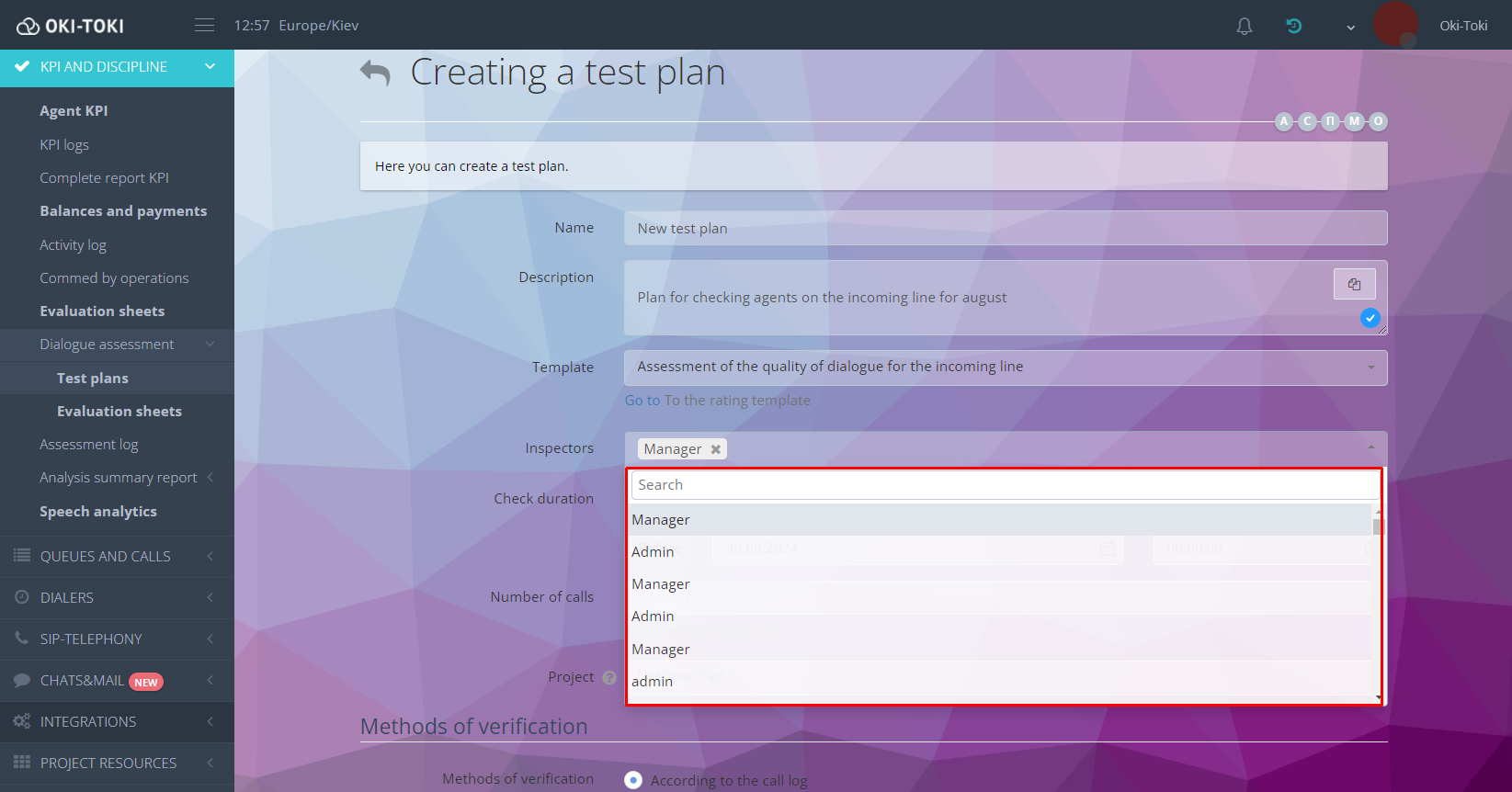
Choose the method by which the check will be conducted:
- By call log: you need to generate a link in the call log, selecting conversations for evaluation.
- By list: create a list containing phone numbers of clients.
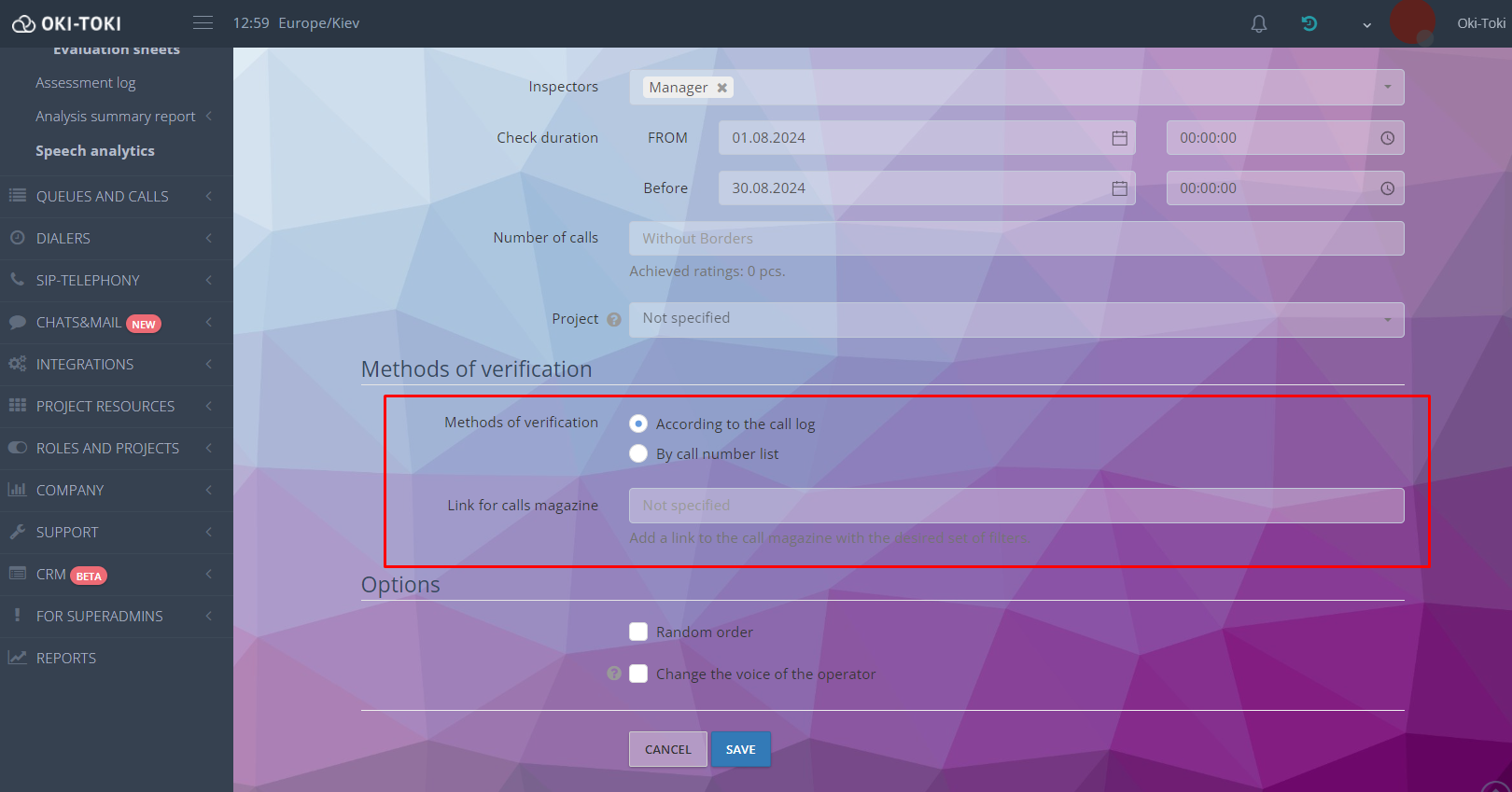
Additional useful options:
- Random order – will allow randomly listening to calls and avoid bias.
- Changing the voice of the agent and hiding the call ID, so the checker is unbiased in their evaluation.
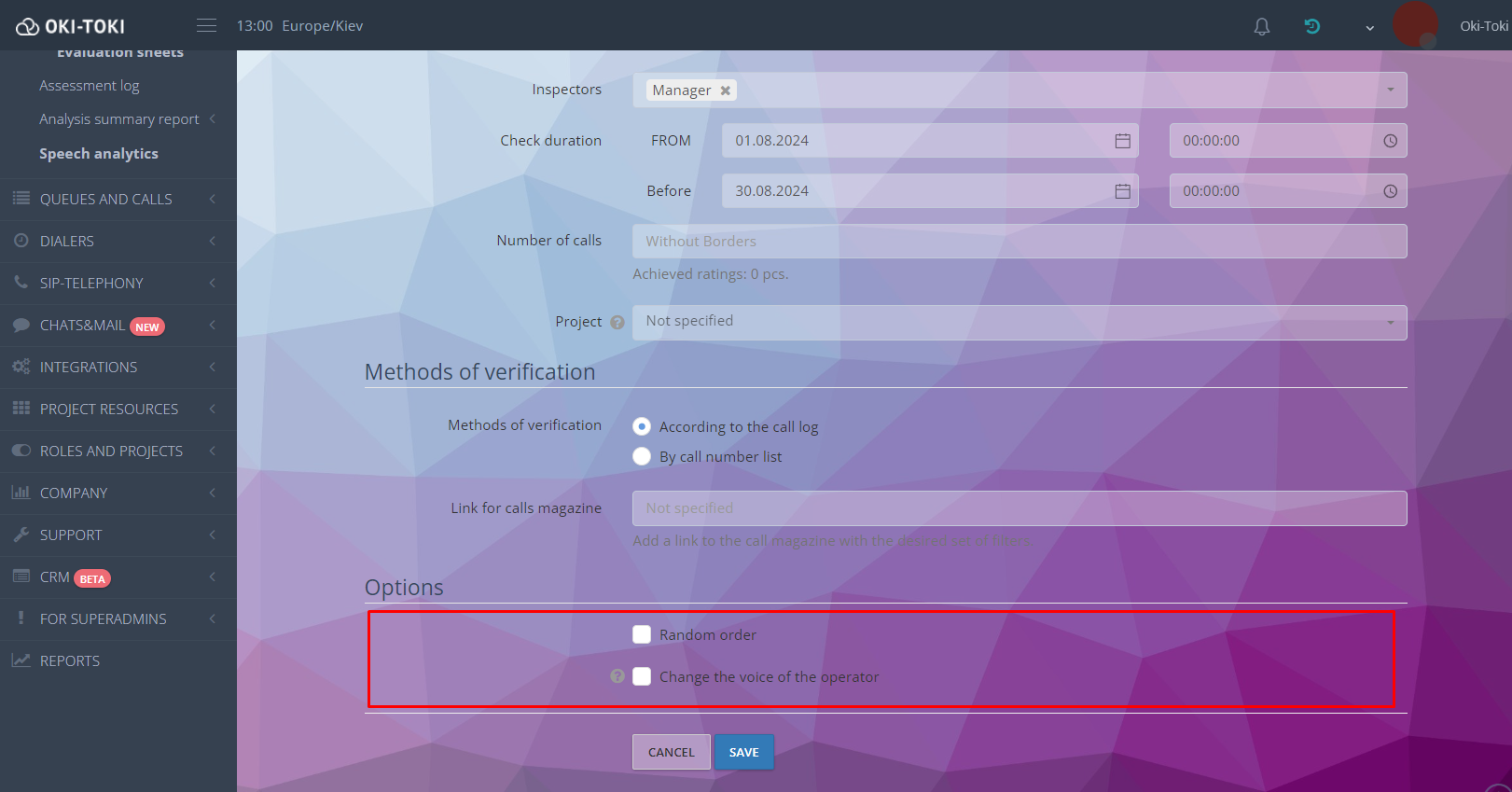
How to create an evaluation form
The second step is forming the Evaluation Form. This is a list of questions or requirements by which the dialogue of the agent with the client will be evaluated. For example, if we are evaluating the service of a call center, the form may include questions like “Was the agent polite?” or “How much time did it take to solve the problem?”. Such a checklist will help evaluate the work of the agent objectively.
- Start by creating a template Evaluation Form;
- Enter into the Evaluation Form categories that you want to use for conversation assessment;
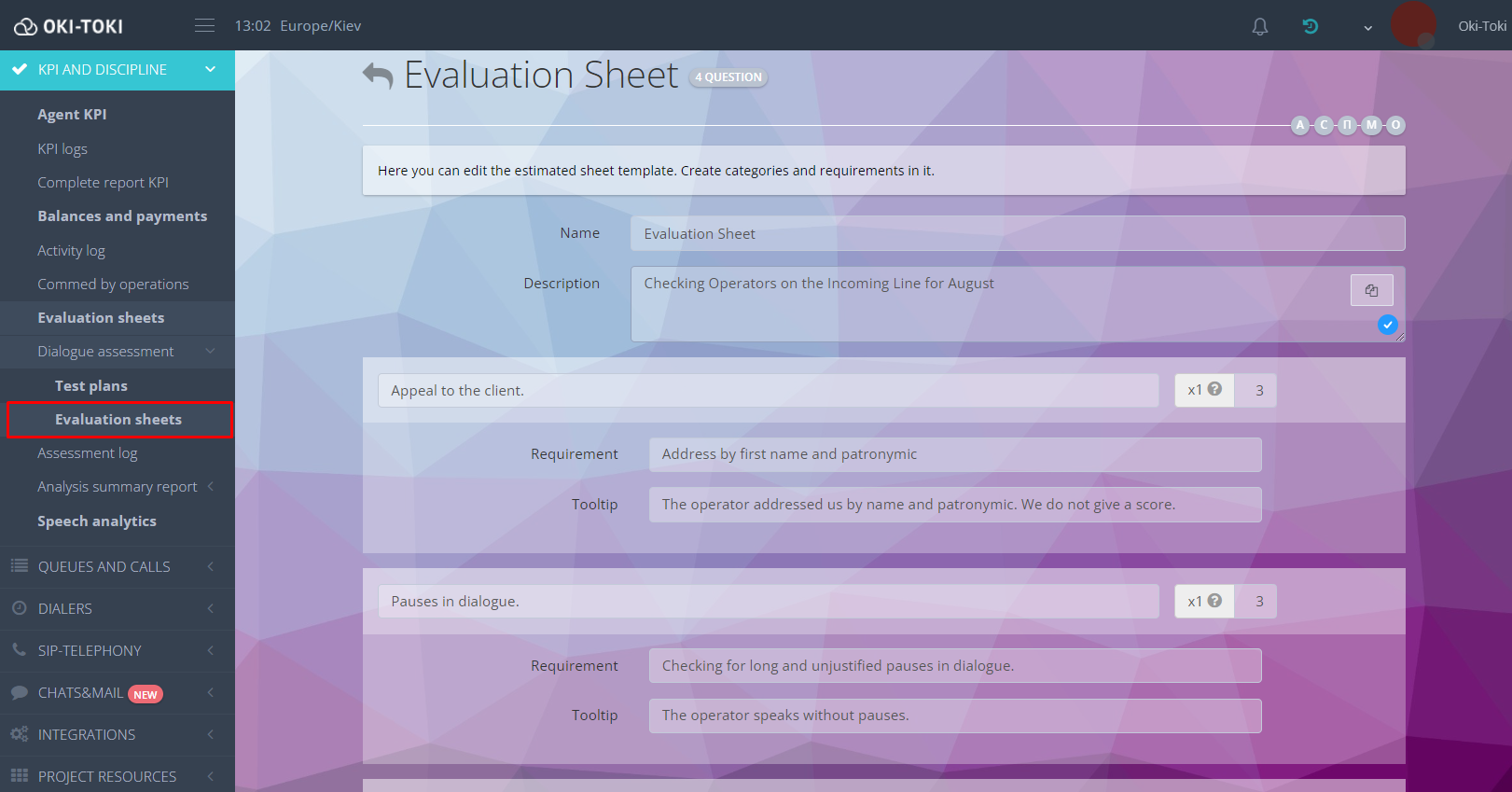
- Set a weight for each category by filling in requirements and hints to determine their importance in evaluation.
- Be sure to specify the points that will be counted when the condition is met. Their calculation will be done in the Summary Report, and the details can be seen in the Evaluation Log.
- The Evaluation Form can be tested to ensure that it reflects all goals and requirements for the evaluation.
- The Evaluation Form is ready, now just add it to the Check Plan.
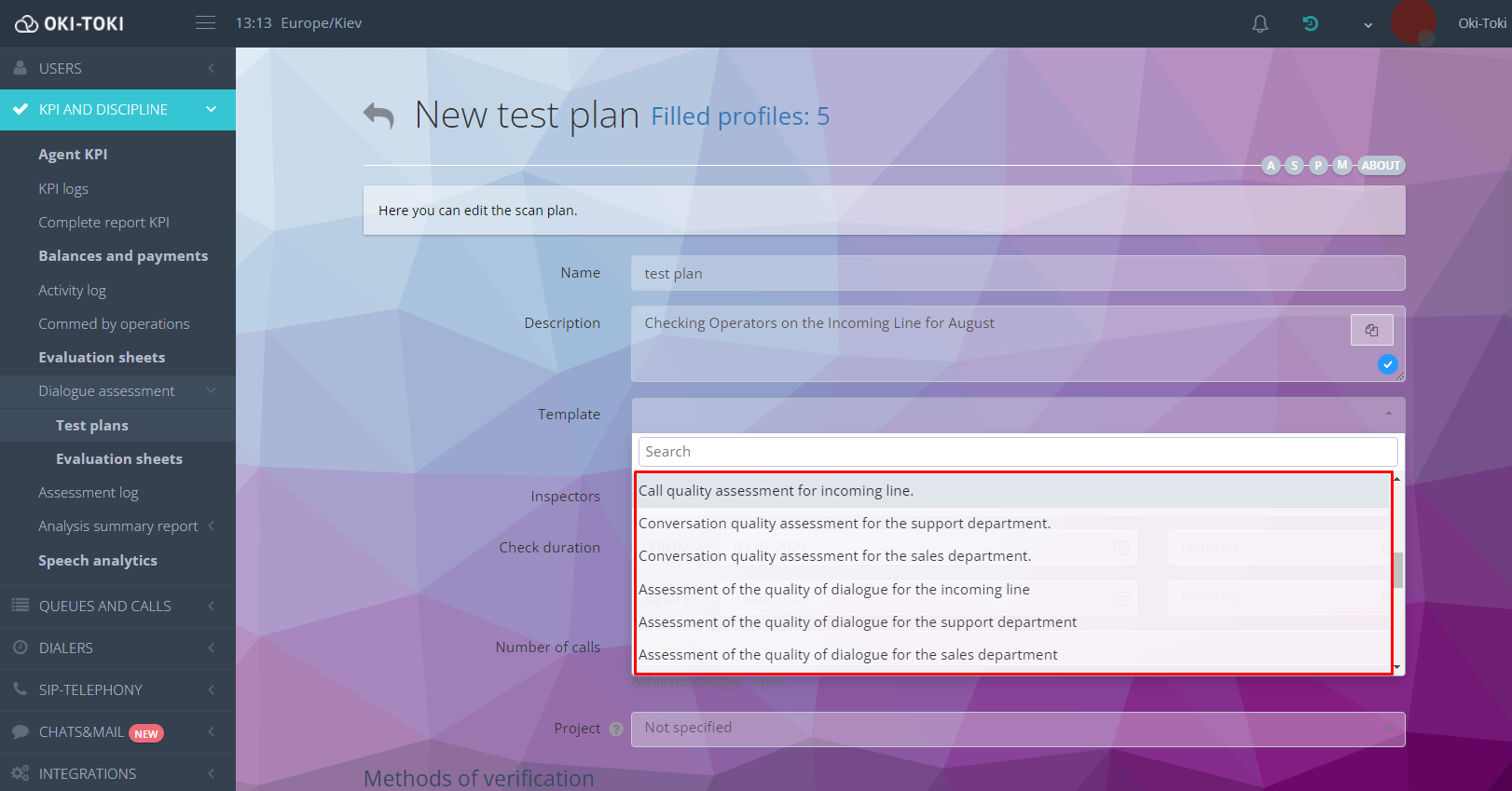
Reports on dialogue evaluation in Oki-Toki
Reports on conversation evaluation in Oki-Toki will show both detailed data and summary statistics. Based on these reports, training strategies are developed and decisions are made to improve call center process workflows.
Evaluation Log
All results and comments are registered in the Evaluation Log. This report will help not only to view but also to thoroughly analyze the interaction of agents with clients based on their conversation evaluations and comments from checkers.
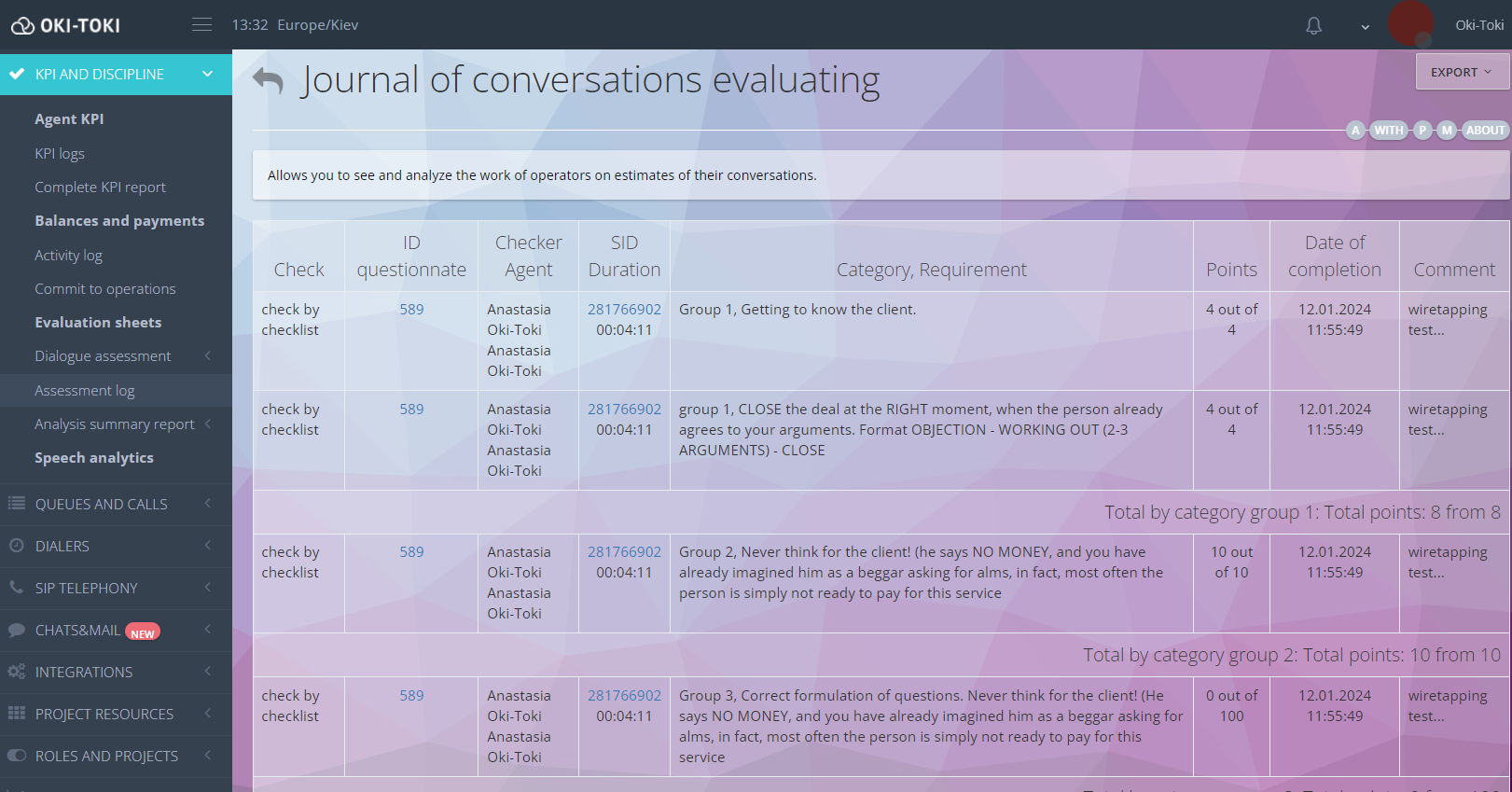
Summary report
For analyzing results and obtaining aggregated information, you can create a summary report based on various criteria:
- By agents: Analysis of the productivity of individual agents or performers.
- By checkers: Evaluation of the work capability of the checkers themselves, their accuracy and fairness in assessment.
- By categories: Comparison of evaluation results in different categories.
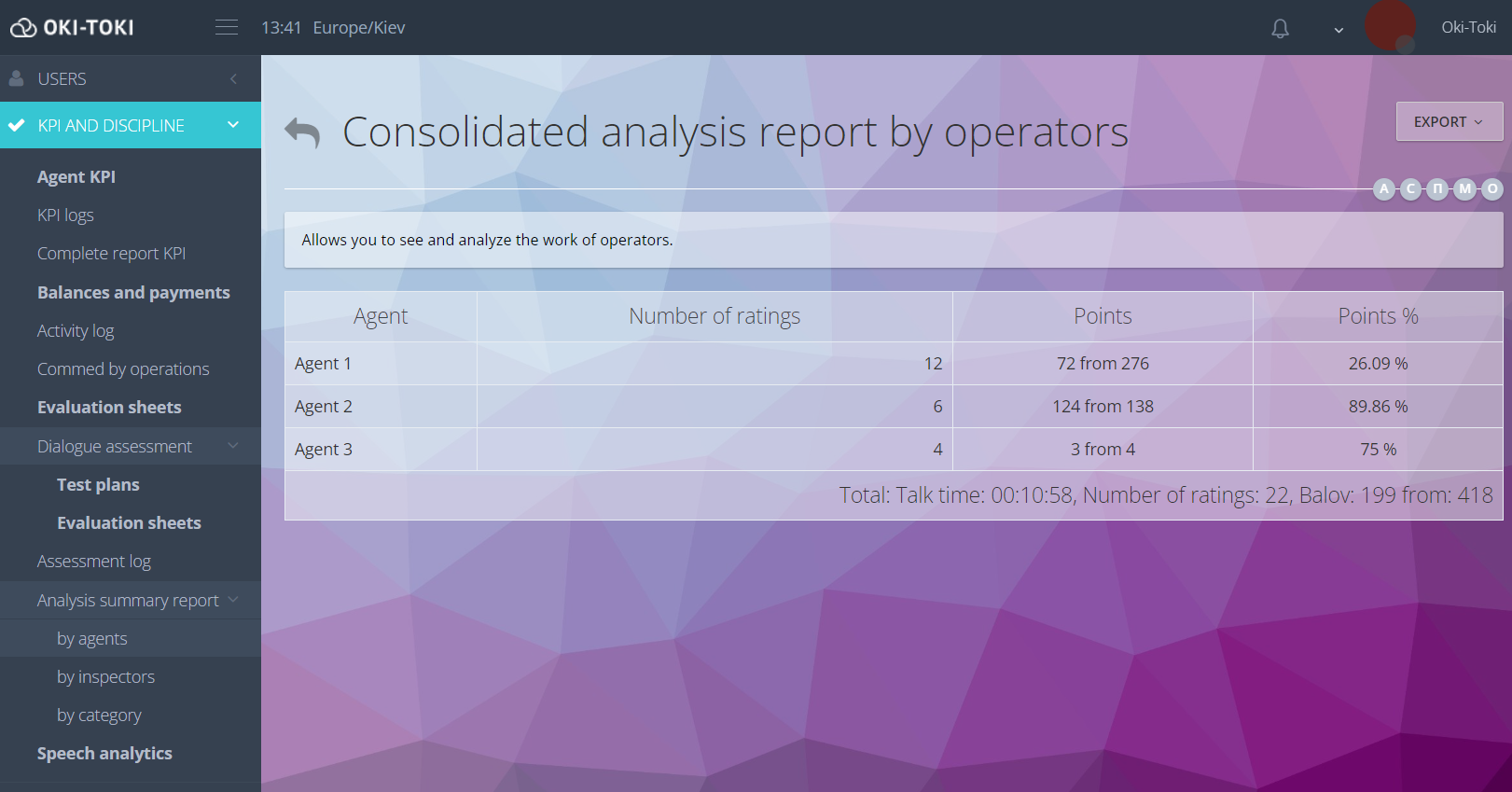
Which calls to choose for evaluation?
Calls for evaluation can be found either by using a schedule or selectively, conducting spot checks on any day:
- Set priorities using a schedule: One way to choose calls is to use a schedule. You can select Friday afternoon as a critical moment when agents more often make mistakes due to fatigue after the work week.
- Spot checks: Suitable when you need to analyze specific cases. If there were changes in the scripts (dialog scripts), you need to choose calls after the update and check how agents apply the new information.
- Use statistics to identify key moments: Pay attention to statistical data to identify periods when agents make mistakes more often. If you notice that complaints from clients increase before breaks, select the corresponding calls for checking.
- Monitor feedback: Clients can be a valuable source of information. If many clients complain about the same problem – this can be the basis for choosing calls.
When choosing calls for analysis, it is important to remember the main goal – to improve employees’ efficiency. Experiment with different approaches, adapting to the needs of your company.
How to properly prepare an evaluation form?
General terms like “good” or “bad” do not provide a clear answer and lead to endless discussions. An objective evaluation is needed, which the agent, possibly not immediately, but will agree with. This is especially important if the quality of the conversation is directly related to his motivation. Nothing can be more objective than numbers, which can be obtained from the evaluation form.
Moreover, when selecting criteria for quality control of calls, it is important to identify the main factors that determine customer loyalty. Only in this way can we accurately measure the efficiency indicators of the call center and improve the quality of service.
Examples of an evaluation form on three groups of conditions
Group 1: Interaction with the subscriber
In this group, we evaluate how the agent speaks. The sound on the line, operator skill mastery, adherence to telephone etiquette rules, the “smile” in the voice. The group categories correspond to the “Five Golden Rules” to be recognizable:
- Friendliness and courtesy;
- Active conversation management;
- Ability to listen to the subscriber;
- Adherence to telephone etiquette;
- Speech literacy.
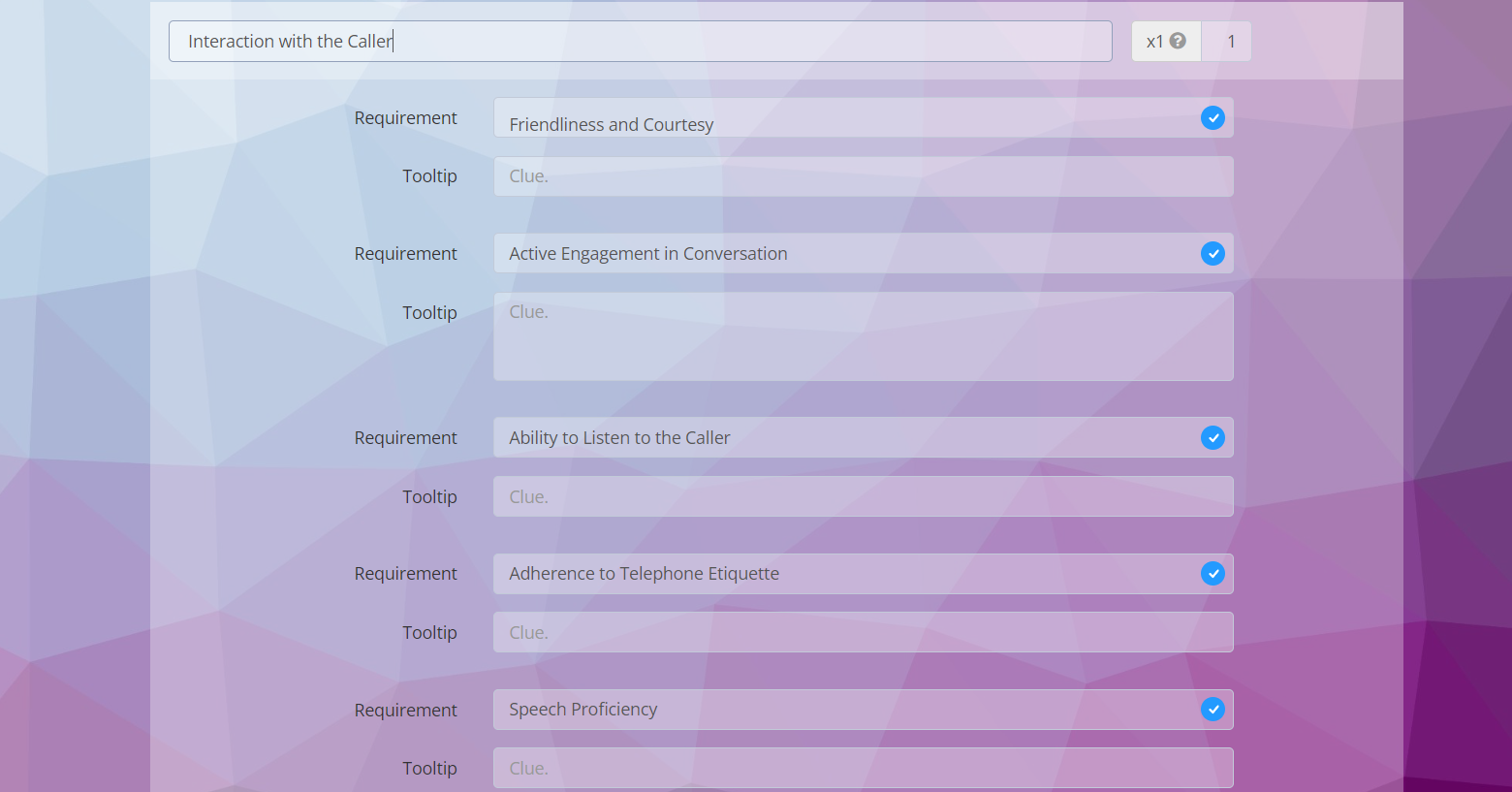
Group 2: Content of the call, sales skills
In this group, we check what the agent says, the level of mastery of information on the project, adherence to the dialogue script, and proper recording of information. The main categories for evaluation:
For information projects:
- Identifying the reason, focus on the call theme;
- Completeness, reliability, logic, sequence of the information provided;
- Correctness of entered information.
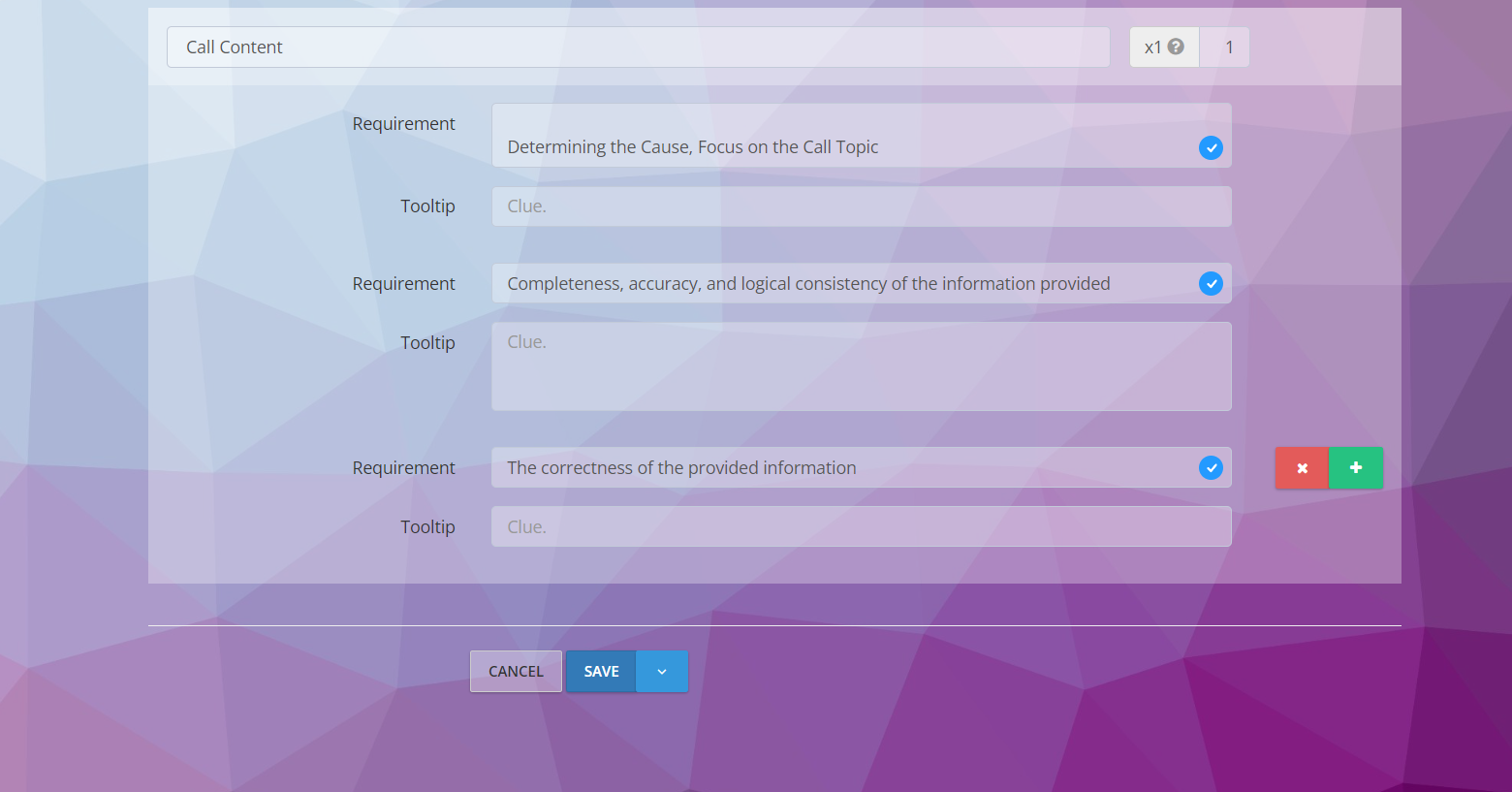
For sales projects:
- Establishing contact;
- Identifying needs;
- Product presentation;
- Handling objections;
- Closing the sale;
- Post-sales support, upselling.
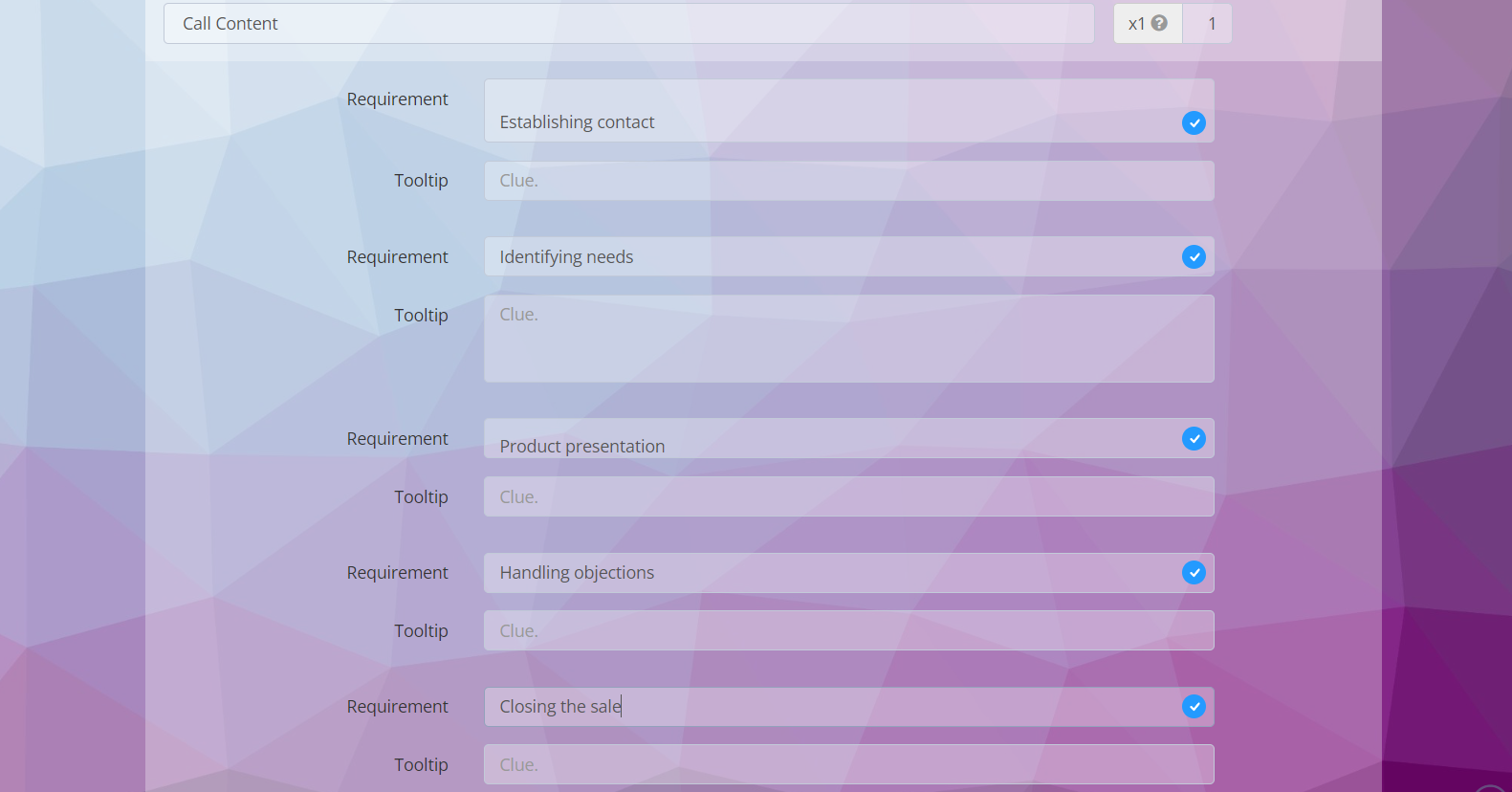
Group 3: Project Specifics
Here we list parameters reflecting individual features and requirements of the project.
- Conducting marketing research by the agent;
- Following a specific algorithm for call transfer;
- Maintaining accuracy of callback when rescheduling calls;
- Use of mandatory words or speech modules in conversation;
- Ability to quickly find and provide the client with needed information.
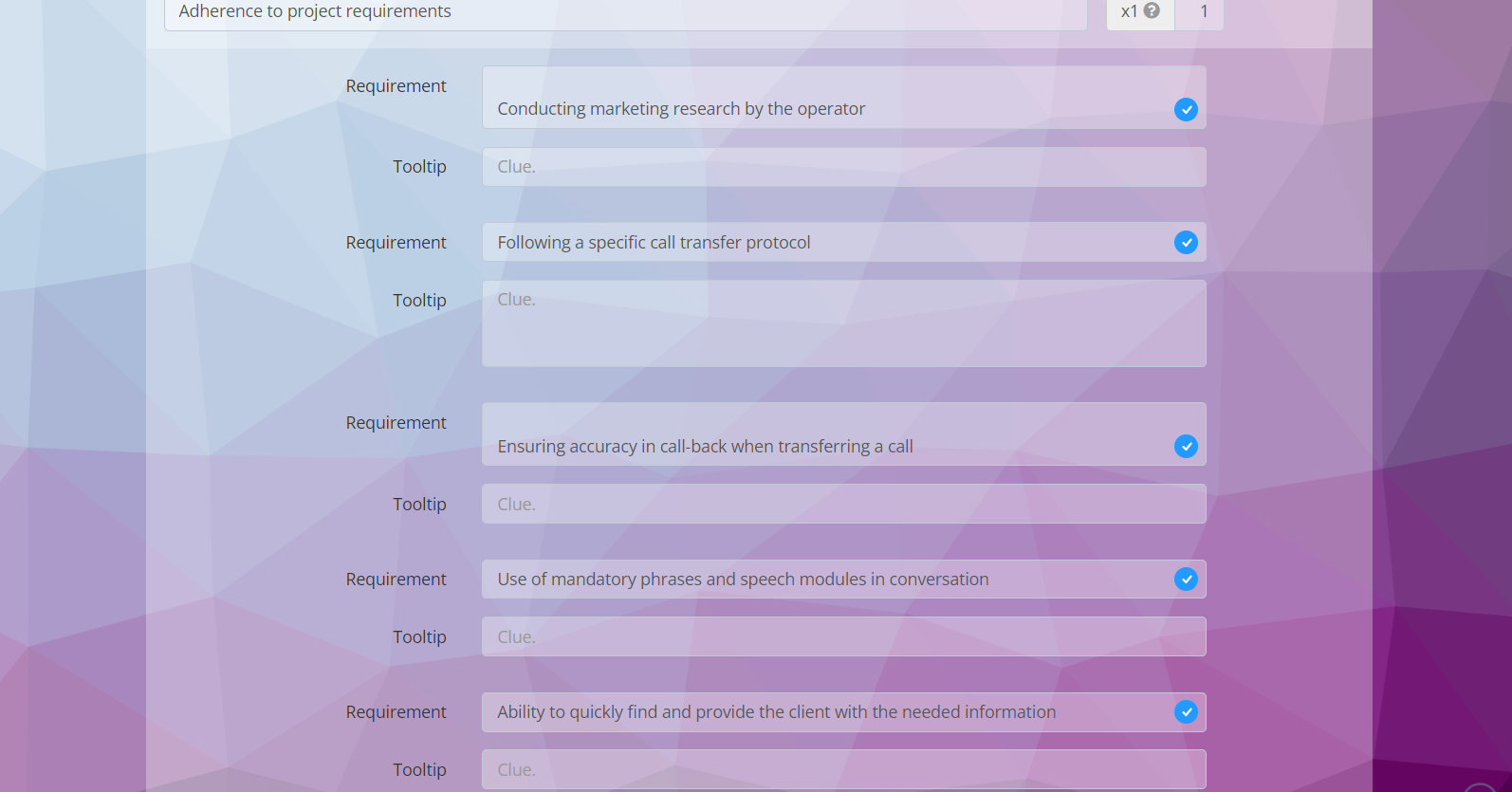
After conducting dialog evaluations and identifying problem areas, it’s necessary to proceed to improve conversation quality. You can read recommendations on this topic in articles:



